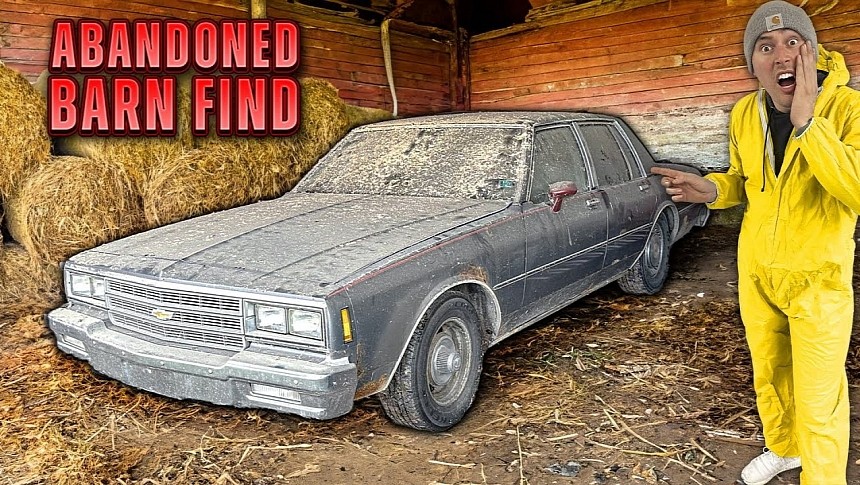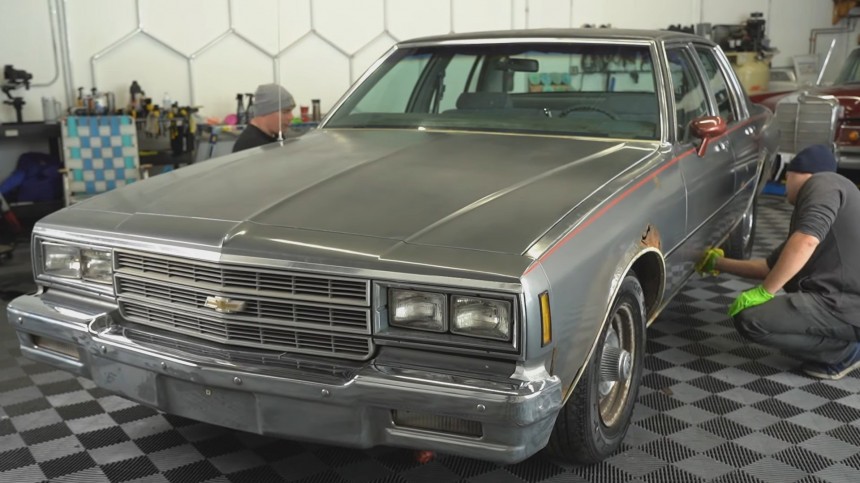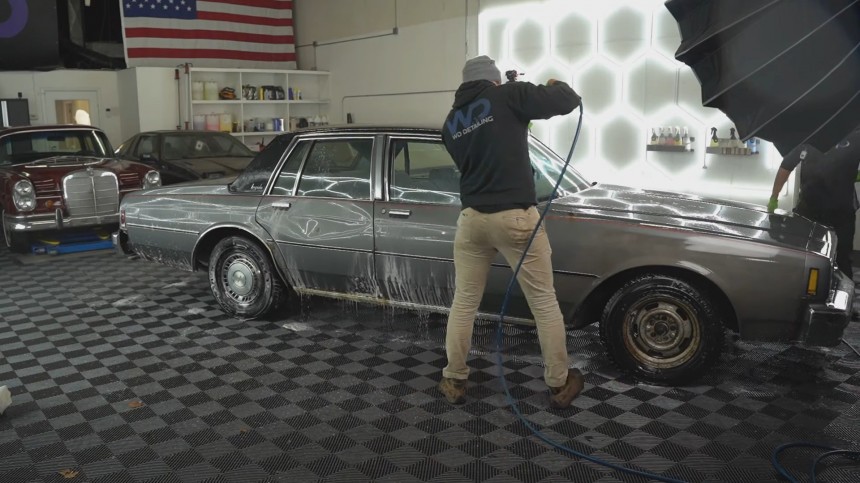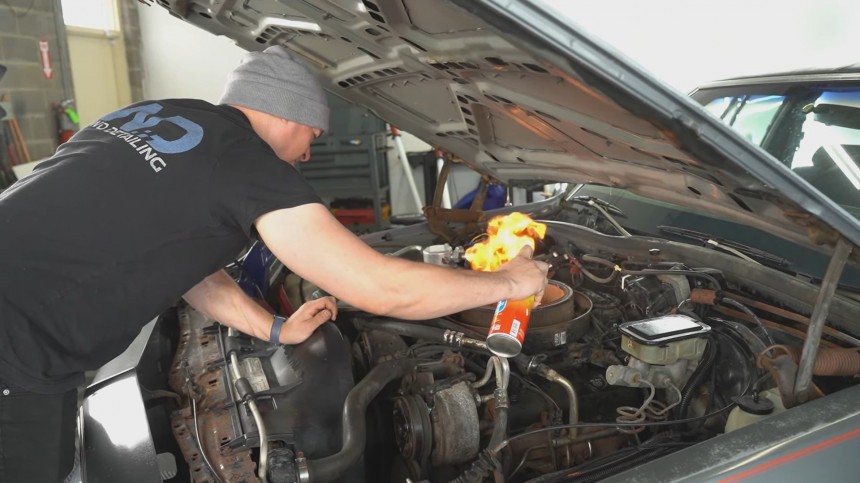Body is special shell of glass-fiber-reinforced plastic. Engine is 225-horsepower V8. Transmission is Powerglide automatic. Racing-type tires with distinctive white stripe are mounted on wire wheels with knock-off hubs. Rear seat has fixed vinyl armrest, incorporating ash tray, electric window regulators and courtesy light. Guess the make and model.
The above lines are from a 1955 brochure, and it’s easy to tell what car it refers to. Powerglide automatic – that means General Motors and mainly Chevrolet. The fiberglass body is unmistakably Corvette – although other independent manufacturers used the lightweight material to build very low-production or even one-off sportscars.
However, there’s something fatally wrong with the last sentence – how many Corvettes have ever had a rear seat? Exactly, none… almost. In 1955, General Motors designers tried their hand at a sportscar with room for five. Although it wasn’t a bad idea at all (Ford’s Thunderbird went through the sales roof when it offered a second row of seats), the concept was scrapped after its debut at the New York Autorama in 1956.
The name, however, was not – and it would live on for 45 model years (not continuous, but spread over more than six decades) as the most popular Chevrolet of them all: the Impala. That’s right, the African gazelle was initially a five-passenger, two-door Corvette derivative. Although the four-page leaflet never mentioned the Corvette name anywhere, the similarities were striking even for those looking the other way (see the gallery and tell).
In 1958, Chevrolet revived the Impala name on the high-end Bel Air. Funny enough, the Bel Air name was once used to designate the hardtop variants of the Deluxe Chevrolets of 1950 before becoming a separate model in 1953. The Impala copied this pattern to the tee – in 1959, it grew into its own full-size line of Chevys.
One of America’s most popular nameplates, the Chevrolet Impala, has been retired three times after almost 17 million units have moved generations of drivers and passengers around for nearly six decades. The first generation (1958 - 1985) was by far the most successful, and GM made two more attempts to revive the badge in the mid-90s and the last time between 2000 and 2020. With the vast volumes assembled, finding one covered in dust is far from surprising, but it is a conversation starter.
The first-generation Impala soldiered on from 1959 until 1985, when the name was retired, having been superseded by the Caprice. Sometimes, piston gods have a very reciprocating sense of humor and indulge themselves in playing practical jokes on combustion-inclined mortals. The Chevrolet Caprice spawned as a range-topping Impala SS in ’65 before transmuting into a separate model the following year.
1985 marks the final year when the Impala rolled out the GM assembly lines, and it would be another nine years until the supple gazelle would return. In ’96, it was again sent into reserves, but 2000 brought hope. Once again, the Chevrolet Impala sprinted on America’s roads – and it did so for two decades.
The nameplate witnessed the transformation of America’s motoring paradigm from massive full-size cruisers with an insatiable appetite for hydrocarbons (due to the big and very big V8s spinning the rear tires) to fuel-efficient front-wheel drive mid-size car with V6 or even inline-fours.
When it first got decommissioned in 1985, the Impala was in its seventh generation, and its once-millionaire status popularity had dwindled to roughly one-twentieth of its all-time peak production. From the high-water marks of over one million units sold in the United States alone in 1965 and again in 1966, the 1985 model moved a tiny fraction – 53,438. In fact, over the entire seventh generation (’77-‘85), the nameplate garnered just under 1.3 million cars.
Even though some people would consider 1985 was three weeks ago, it’s been 38 years since the car in our story first spun its Chevrolet rubbers over the USA. And, if what the car-detailing vloggers who dug it out of retirement are saying is correct, this four-door Impala of 1985 last ran in 2013. However, the sticker on the lower corner of the windshield – visible at the beginning of the video at the 06:00 timestamp - says '21'.
Whichever the case, the sedan is covered in a very stubborn layer of dirt and sawdust, but underneath all that filth, the body appears surprisingly clean. Yes, there are some rust spots, but they seem to be only skin-deep. And the interior, while not the most inviting in terms of cleanliness, is in pretty good shape.
The detailers don’t tell – or show – the car’s mileage, but the LG4 305-cubic inch (5.0-liter) V8 with an electronic Q-Jet carburetor on top of it still has something going for itself. After the washing and cleaning session, the YouTubers try to start the motor using the quick-fix method of spraying the carb with some starter fluid.
And, while the small-block turns on its own, the only thing the boys from WD Detailing can start is a small fire inside the air cleaner. They would have probably gotten the motor cranking with a bit more persistence. Still, they’re not in the reviving old powerplants business.
Since we opened the 1985 Chevy Impala engine topic, let’s see what this example has to show: the 305 V8 - the mainstay of Chevrolet in the 80s - was a computer-controlled plant that delivered an anemic 165 hp and 244 lb-ft (197 PS, 332 Nm). Not something to write home about if we think of 1965– that year saw the famous Impala SS’ 396-cube V8 (6.5-liter) deliver 425 hp (431 PS).
Twenty years after that one-year-only wonder of ’65, the four-door Impala (by then, it was the only available body style) put three engine options on the table: the 305, a small 262-cubic-inch (4.3-liter) V6 and a 350 V8 diesel (5.7-liter). They could be combined with two automatics – three- or four-speeds.
However, there’s something fatally wrong with the last sentence – how many Corvettes have ever had a rear seat? Exactly, none… almost. In 1955, General Motors designers tried their hand at a sportscar with room for five. Although it wasn’t a bad idea at all (Ford’s Thunderbird went through the sales roof when it offered a second row of seats), the concept was scrapped after its debut at the New York Autorama in 1956.
The name, however, was not – and it would live on for 45 model years (not continuous, but spread over more than six decades) as the most popular Chevrolet of them all: the Impala. That’s right, the African gazelle was initially a five-passenger, two-door Corvette derivative. Although the four-page leaflet never mentioned the Corvette name anywhere, the similarities were striking even for those looking the other way (see the gallery and tell).
One of America’s most popular nameplates, the Chevrolet Impala, has been retired three times after almost 17 million units have moved generations of drivers and passengers around for nearly six decades. The first generation (1958 - 1985) was by far the most successful, and GM made two more attempts to revive the badge in the mid-90s and the last time between 2000 and 2020. With the vast volumes assembled, finding one covered in dust is far from surprising, but it is a conversation starter.
The first-generation Impala soldiered on from 1959 until 1985, when the name was retired, having been superseded by the Caprice. Sometimes, piston gods have a very reciprocating sense of humor and indulge themselves in playing practical jokes on combustion-inclined mortals. The Chevrolet Caprice spawned as a range-topping Impala SS in ’65 before transmuting into a separate model the following year.
The nameplate witnessed the transformation of America’s motoring paradigm from massive full-size cruisers with an insatiable appetite for hydrocarbons (due to the big and very big V8s spinning the rear tires) to fuel-efficient front-wheel drive mid-size car with V6 or even inline-fours.
When it first got decommissioned in 1985, the Impala was in its seventh generation, and its once-millionaire status popularity had dwindled to roughly one-twentieth of its all-time peak production. From the high-water marks of over one million units sold in the United States alone in 1965 and again in 1966, the 1985 model moved a tiny fraction – 53,438. In fact, over the entire seventh generation (’77-‘85), the nameplate garnered just under 1.3 million cars.
Whichever the case, the sedan is covered in a very stubborn layer of dirt and sawdust, but underneath all that filth, the body appears surprisingly clean. Yes, there are some rust spots, but they seem to be only skin-deep. And the interior, while not the most inviting in terms of cleanliness, is in pretty good shape.
The detailers don’t tell – or show – the car’s mileage, but the LG4 305-cubic inch (5.0-liter) V8 with an electronic Q-Jet carburetor on top of it still has something going for itself. After the washing and cleaning session, the YouTubers try to start the motor using the quick-fix method of spraying the carb with some starter fluid.
Since we opened the 1985 Chevy Impala engine topic, let’s see what this example has to show: the 305 V8 - the mainstay of Chevrolet in the 80s - was a computer-controlled plant that delivered an anemic 165 hp and 244 lb-ft (197 PS, 332 Nm). Not something to write home about if we think of 1965– that year saw the famous Impala SS’ 396-cube V8 (6.5-liter) deliver 425 hp (431 PS).
Twenty years after that one-year-only wonder of ’65, the four-door Impala (by then, it was the only available body style) put three engine options on the table: the 305, a small 262-cubic-inch (4.3-liter) V6 and a 350 V8 diesel (5.7-liter). They could be combined with two automatics – three- or four-speeds.












































